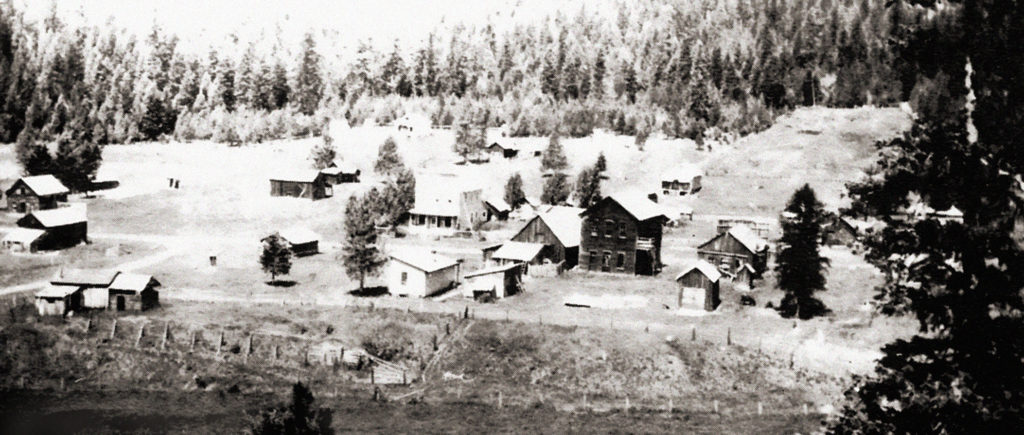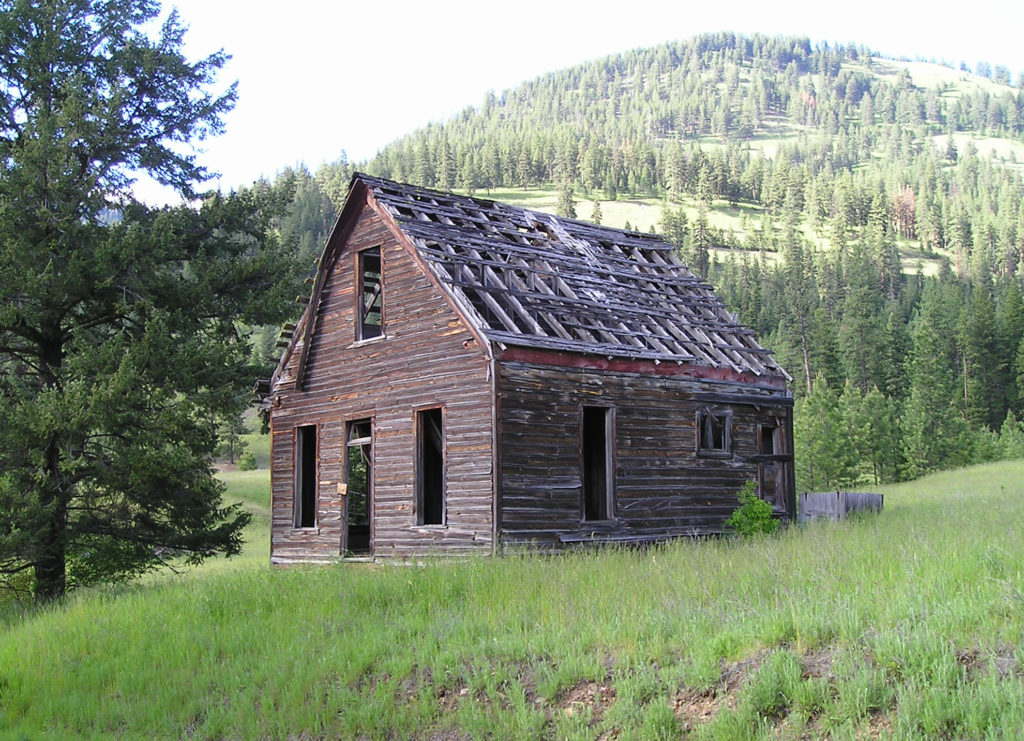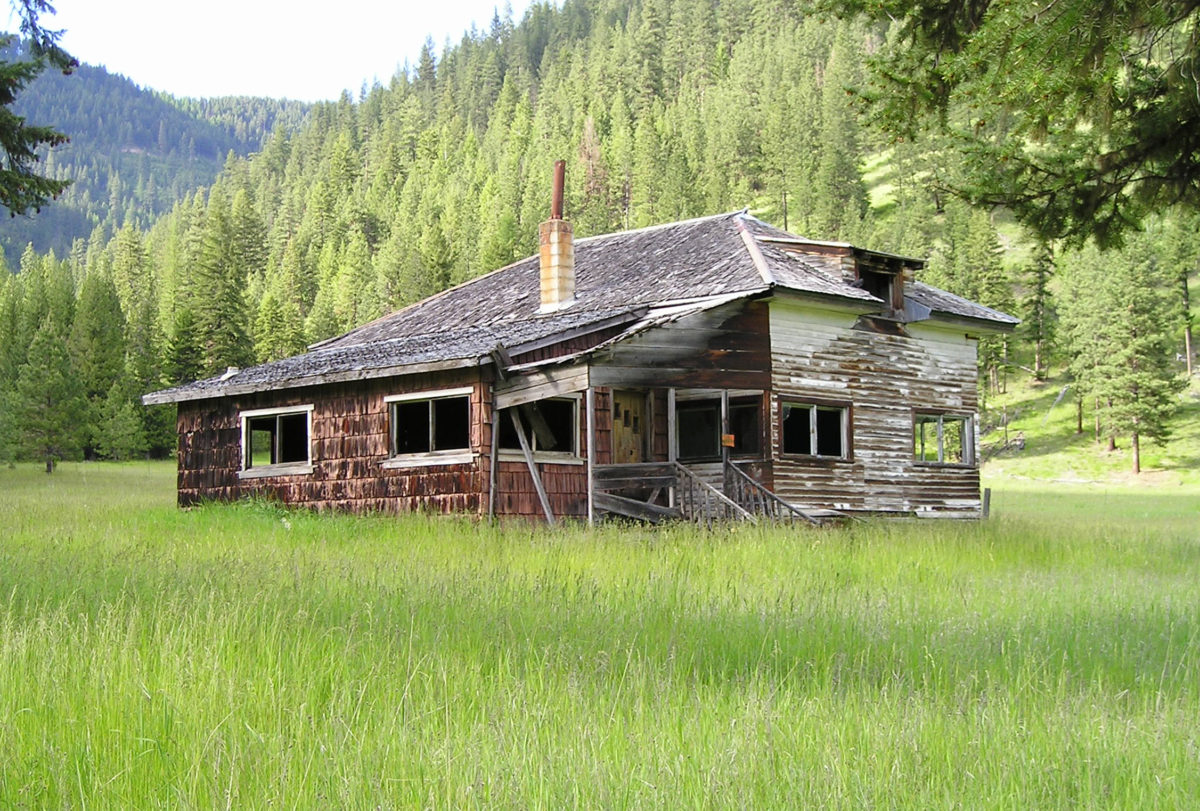In the summer of 1887 five prospectors were exploring Spring Gulch (present-day Keystone Creek), a southwesterly flowing stream from Keystone Mountain to the Missoula River (today known as the Clark Fork) in Montana Territory. A few miles upstream they discovered an abundance of silver galena and immediately registered claims in Missoula. They registered the Iron King and Iron Queen on August 3, the Silver Glance on the 4th and the Ivanhoe and Keystone on the 5th. The five added the name of Phil O’Rourke, who had located the Bunker Hill group of claims in Idaho Territory and grubstaked the 1887 prospecting expedition for a lion’s share of the profit.
Word got out, and others stampeded to the area. Though several registered claims, most ended up with nothing but holes in the ground, except E.W. Parks, whose O.R. & N mine yielded ore assayed at 150 ounces silver and 58 percent lead. He sold a major share to Dr. J.M. Hargrave, and two years later the partners sold out to Helena investors, who formed the O.R. & N. Mining Co. The investors assumed the ore veins extended 2 miles west to Slowey Creek, another stream draining Keystone Mountain to the Clark Fork, but initially their only successful mine on Slowey was the Little Pittsburgh.
Meanwhile, on Spring Gulch, with the winter of 1887 imminent, optimists framed up cabins, and William Bryan filled the miners’ needs by opening an outdoor saloon. He freighted in two kegs of whiskey and set them up under the protective branches of an accommodating tree. Bryan provided no bar, no tables, no chairs, no stools and no glasses; miners brought their own tin cups and were served a shot straight from a spigot in the barrel. With profits from his whiskey operation Bryan built a general store, relying on A.P. Johnson’s freight line to supply him with groceries and stock from Missoula, 60 miles to the southeast. Soon after came a competing saloon, a butcher shop, a blacksmith shop, a barbershop, a restaurant and boardinghouse run by Nellie Neal and another owned by Daniel McLean and his married sister Kate McDowell. The town was first known as O’Rourke, but in 1890 its name changed to Carter to honor Thomas H. Carter, the man instrumental in securing a post office that year with Bryan as postmaster. At the time Carter was the new state of Montana’s first representative to Congress, and he later served two terms as a U.S. senator (1895–1901 and 1905–11).
The population of Carter would peak above 300 in the 1890 federal census. Meanwhile the original five prospectors were doing well. In 1891 one sold his eighth interest in the mining operations for $7,500 to O’Rourke, and the next year the remaining owners formed the Keystone & King Mining & Milling Co. But the mines fell short of expectations, largely due to the 1893 devaluation of silver. The O.R. & N soon shut down operations, while the struggling Keystone & King struggled to survive, borrowing money from local merchants who also felt the pinch until merchant Bryan and others forced the company into bankruptcy. The post office closed in 1894.

That March the Keystone & King properties sold at a sheriff’s auction for $1,736.55. The new owner, Bland Mining & Milling Co., was debt free but lived up to its name “Bland” by doing little mining. In October 1900 it did patent the Keystone, Iron King, Iron Queen and Ivanhoe mines. Rumors Bland was trying to unload its properties in Spring Gulch created a minor revival in the district, and the post office reopened in 1902. In 1905 the company finally sold out for $10,000 to Pennsylvania investor Nelson Weddle Jr., who created the King & Queen Mining Co. The company installed mill equipment to “re-mine” the slag heaps, but little new mining was done, and the post office again closed in 1904.
Mining in the area remained relatively quiet until 1911 when prospectors Lou McHaffey and Sam J. Wilson discovered gold. The Carter Mining & Milling Co. soon formed, offering shares at 20 cents each. The company bought unpatented claims and consolidated the Iron King and Iron Queen to become the Nancy Lee. Enough miners arrived to warrant another reopening of the post office. As a town near Fort Benton had taken the name “Carter” in the interim, the Mineral County town changed its name a final time to Keystone. Mining in the district continued steadily until 1925 and then on an off-and-on basis till the 1960s.

Meanwhile, things were picking up at the Little Pittsburgh and other mines on Slowey Creek. The St. Mary, discovered by James McBride in 1895, was among the abandoned prospect holes, but in 1902 Edward Boyce and Dennis Reardon relocated the mine and renamed it the Emmet. It operated for more than 20 years, though how profitably is uncertain. By 1925 it had been abandoned, so John E. Hartman built a cabin across the adit and filed a claim on the mine. He soon announced discovery of a seam of copper ore the previous owners had overlooked, and he was successively mining it himself and trucking the ore to smelters in Idaho. Harmon’s bank account grew accordingly until 1930 when he quit the mine, took out all his money, loaded his possessions on his truck and disappeared. After Harmon’s mysterious departure, neighbors inspected his mine and discovered his “copper mining” equipment consisted of all the copper tubing needed to compose a still. During Prohibition, which would soon end, he had supplied eastern Idaho with distilled alcohol. His mine, aptly renamed the New Idea, was undoubtedly the most productive mine on Slowey Creek.
Today a trip up Keystone Creek begins on a dirt road 5 miles northwest of Superior. While some derelict cabins are visible, most are on private land. Of the mines there is little evidence.






